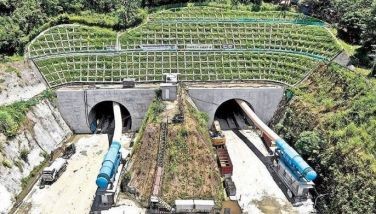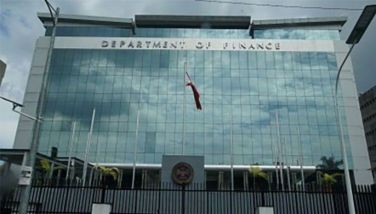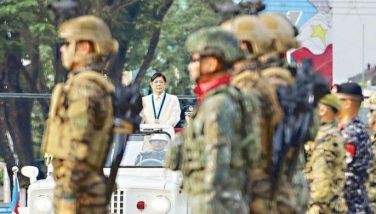Government urged to cut tariffs, import more
Amid rising global prices
MANILA, Philippines — The country’s economic team is pushing for the expansion of tariff reduction and more volume of certain imported agricultural commodities to cushion the impact of soaring global oil prices on domestic food prices.
During the Cabinet meeting with President Duterte late Monday night, Socioeconomic Planning Secretary Karl Chua said the government’s economic development cluster has proposed 14 measures to alleviate the expected impact of the Ukraine-Russia war, which has caused the prices of global petroleum products to soar.
Consumers have been feeling the pinch of soaring prices of petroleum products with the biggest increase so far slapped yesterday.
Hefty hikes are expected in the weeks ahead as the conflict escalates between the two countries. Elevated oil prices eventually translate to more expensive food products.
With this, the economic team said there is a need to boost food supply in the country particularly pork, fish, chicken, rice, corn and wheat.
In particular, the economic managers are pushing to expand supply and reduce prices of pork by extending the lower tariff of 15 percent in-quota and 25 percent out-quota with minimum access volume (MAV) at 200,000 metric tons.
President Duterte issued an executive order last year, which raised the MAV for pork imports from 54,210 MT to 254,210 MT to increase domestic supply and, in turn, stabilize retail prices.
Duterte also issued an order that brought down the tariff on pork to five percent from 30 percent within the MAV, and to 15 from 40 percent outside the MAV.
These orders will lapse by May. The economic team wants them extended until December 2022.
“We deem it necessary to extend these orders to ensure lower prices for the people and adequate supply,” Chua said.
The economic team is also pushing for the quick release of imported pork from cold storages for people’s consumption, especially those living outside Metro Manila.
“On tariff reduction, since Congress is not in session, we will submit a request for the issuance of an EO,” Chua said.
Amid a supply crunch for fish, the economic team is looking at an additional 140,000 MT of imported small pelagic fish as early as the second quarter until the end of the year.
The projected supply gap is at 200,000 MT and import allocation that was released last year was only at 60,000 MT.
“We need to increase this, and the end result is adequate supply so that people can have lower prices for fish,” Chua said.
Likewise, Chua said the temporary restraining order on the planned importation of 200,000 MT of sugar should be addressed.
The importation currently hangs in the balance after a regional trial court in Negros Occidental issued a writ of prelimiary injunction on the Sugar Regulatory Administration (SRA).
This means that the SRA has been ordered to stop with the importation plan unless it is lifted by the court.
“We propose to allow the direct importation by industrial users and food and beverage manufacturers. Buy from domestic and import the extra that is needed so that we can help the food producers also,” Chua said.
On rice, the economic team also wants to expand supply and reduce prices by extending the 35 percent tariff rate until yearend. The original EO for this is set to expire in June.
The Department of Agriculture is tasked to closely monitor rice inflation and buffer stock.
It will also help local government units to increase their inventory to ensure adequate supply in each province with concessional loans from Land Bank of the Philippines and the Development Bank of the Philippines in the procurement of post-harvest facilities and warehouses.
“Should the local production not be enough, we will facilitate continuous release of SPS (sanitary and phytosanitary) import clearance especially for shipment arriving for the lean season starting July,” Chua said.
Another tariff reduction being eyed is for corn imports which are primarily used as feeds for poultry and livestock.
The government wants to lower the most favored nation tariff rate to five percent in-quota and 15 percent out-quota and allow a MAV where importers can avail of the four million MT until the end of the year.
“This is just temporary to ensure that we have adequate feeds so that we can buy pork and chicken at a cheaper price,” Chua said.
As for chicken, Chua emphasized the need to accelerate the release of SPS from cold storage warehouses to push up inventory.
The economic team likewise urged to expand sources of wheat imports such as India which is offering to provide additional supply to ensure an adequate supply of bread at affordable prices.
As an overall support to the agriculture sector, the government moves to implement the Plant Plant Plant Part 2, provide targeted fertilizer vouchers to farmers, and expand supply through bilateral discussion with fertilizer producing countries.
- Latest
- Trending





























